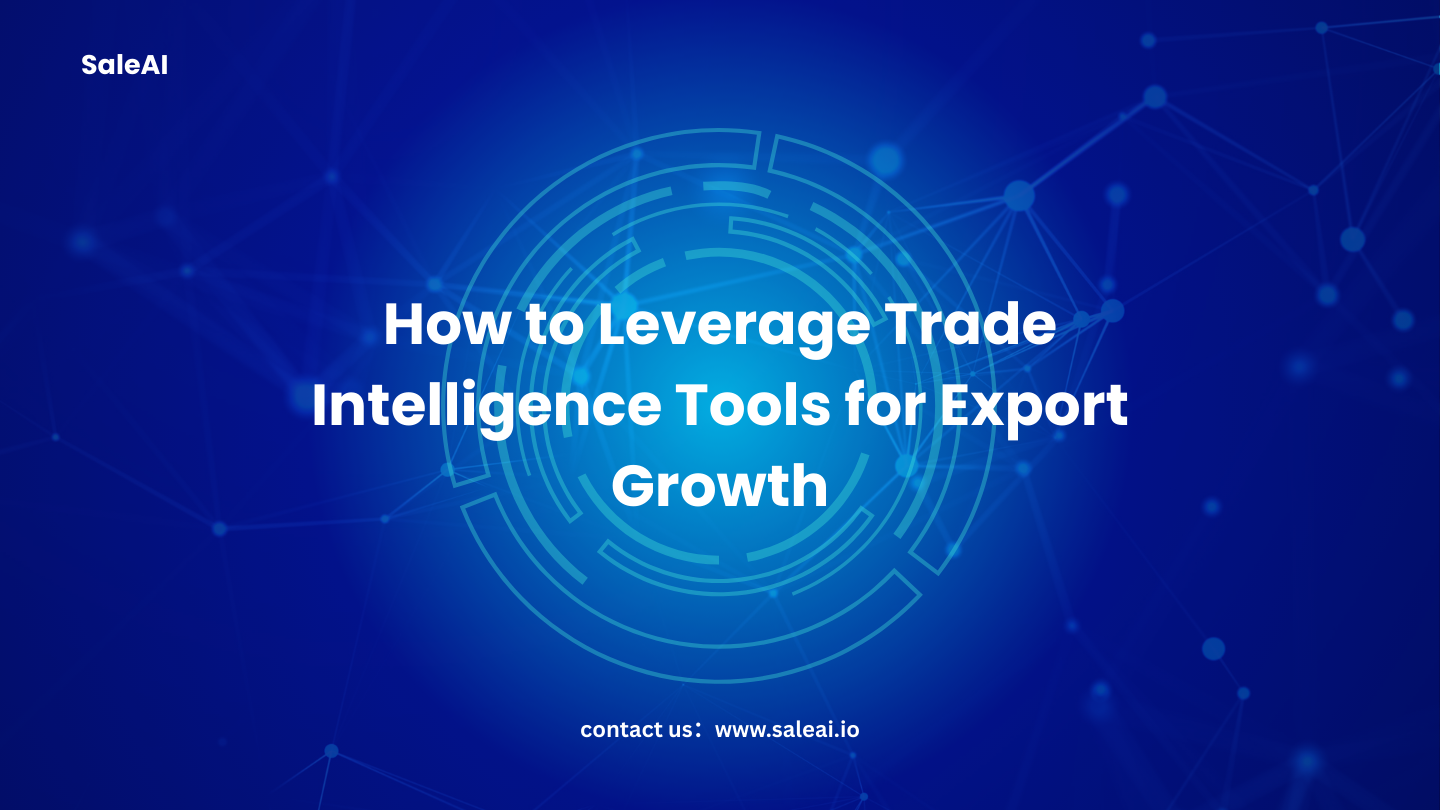
Global trade has become more dynamic and competitive than ever before. Businesses must navigate shifting market demands, changing regulatory environments, and increasing competition to succeed in international markets. In this context, trade intelligence tools have emerged as a key resource for exporters, providing actionable insights and helping businesses make data-driven decisions.
These tools focus on analyzing trade flows, buyer behaviors, and market trends, enabling businesses to identify opportunities and mitigate risks. Unlike outdated, one-size-fits-all approaches, trade intelligence tools offer tailored insights that exporters can use to refine their strategies and achieve sustainable growth.
This article will explore the role of trade intelligence tools in export growth, offering practical tips and insights to help businesses get started.
What Are Trade Intelligence Tools?
Trade intelligence tools are platforms or software designed to analyze and present global trade data in a structured, actionable format. These tools draw information from sources such as:
- Customs and import/export data,
- Industry-specific trade reports,
- Market trends and economic indicators.
The primary purpose of trade intelligence tools is to provide businesses with the information they need to:
- Identify new export opportunities,
- Understand buyer behavior and preferences,
- Monitor competitor activity,
- Stay informed about regulatory changes.
By using these tools, exporters can reduce uncertainty and make better-informed decisions about where and how to expand their operations.
Key Benefits of Trade Intelligence Tools
- Identifying New Markets
Expanding into new markets requires careful research and planning. Trade intelligence tools help businesses identify regions with growing demand for their products by analyzing import/export trends and economic data.
For example, SaleAI’s platform allows users to filter trade data by product category and region, making it easier to pinpoint markets with strong potential.
- Understanding Buyer Activity
Knowing who your buyers are and what they need is critical to export success. Trade intelligence tools provide insights into buyer activity, such as:
- Purchase history,
- Product preferences,
- Import frequency and volume.
These insights allow exporters to better understand their target audience and tailor their products and marketing efforts accordingly.
- Monitoring Competitor Strategies
Staying ahead of the competition is vital in global trade. Trade intelligence tools allow businesses to track competitor activity, such as:
- Key markets they operate in,
- Products they export,
- Pricing and positioning strategies.
While this information should be used responsibly, it can provide valuable context for refining your own export strategy.
- Adapting to Market Trends
Global markets are constantly evolving, with changes driven by economic conditions, consumer preferences, and regulatory policies. Trade intelligence tools provide real-time insights into these trends, helping businesses adapt their strategies and stay competitive.
For instance, if demand for a specific product is increasing in a particular region, the tool can highlight this trend, allowing businesses to act quickly and capture the opportunity.
- Supporting Compliance and Risk Management
Navigating trade regulations and compliance requirements can be challenging, especially when entering new markets. Trade intelligence tools help businesses stay informed about regulatory changes and potential risks, reducing the likelihood of costly mistakes or delays.
How to Use Trade Intelligence Tools Effectively
-
Define Clear Objectives
Before using a trade intelligence tool, identify your specific goals. Are you looking to find new buyers, expand into a specific region, or monitor competitor activity? Having clear objectives will help you make the most of the tool’s features. -
Focus on Relevant Data
Trade intelligence tools provide access to vast amounts of data, but not all of it will be relevant to your business. Use filters and search criteria to focus on the information that aligns with your goals. -
Combine Data with Expertise
While trade intelligence tools provide valuable insights, they should be used in conjunction with your team’s expertise. Data alone is not enough—context and strategic thinking are essential for turning insights into action. -
Regularly Review and Update Your Strategy
Markets and buyer behaviors change over time, so it’s important to regularly review your trade intelligence data and update your strategy accordingly.
How SaleAI Supports Trade Intelligence for Export Growth
SaleAI offers a trade intelligence platform designed to provide exporters with actionable insights and practical solutions. Here’s how SaleAI supports businesses:
- Comprehensive Trade Data Analysis: SaleAI analyzes global trade flows to help businesses identify opportunities and trends relevant to their products.
- Buyer Activity Tracking: The platform provides detailed profiles of buyers, including their purchasing behavior and market focus.
- Customizable Search Features: Users can apply filters such as product category, region, and transaction size to refine their search results.
- Real-Time Market Insights: SaleAI offers updates on market trends and buyer activity, enabling businesses to stay ahead of the curve.
- Integrated Outreach Tools: The platform integrates with communication tools like email and messaging platforms, making it easier to connect with buyers.
Common Misconceptions About Trade Intelligence Tools
It’s important to set realistic expectations when using trade intelligence tools. Here are some common misconceptions:
-
They Don’t Provide Instant Results
While trade intelligence tools can streamline research and analysis, success still requires time, effort, and strategic execution. -
They Don’t Replace Human Expertise
These tools are designed to support decision-making, not replace the expertise and judgment of your team. -
They Require Regular Updates
The value of trade intelligence tools depends on the quality and timeliness of the data they provide. Regular updates are essential to maintaining accuracy and relevance.
Conclusion
Trade intelligence tools are a valuable resource for businesses looking to grow their exports and succeed in global markets. By providing insights into buyer behaviors, market trends, and competitor activity, these tools enable businesses to make data-driven decisions and reduce uncertainty.
SaleAI’s trade intelligence platform offers practical and realistic solutions for exporters, helping them identify opportunities, streamline processes, and adapt to changing market conditions. Whether you’re entering a new market or refining your strategy in an existing one, SaleAI can support your efforts with actionable data and user-friendly features.
If you’re ready to take your export strategy to the next level, explore how SaleAI can help your business achieve sustainable growth through trade intelligence.




